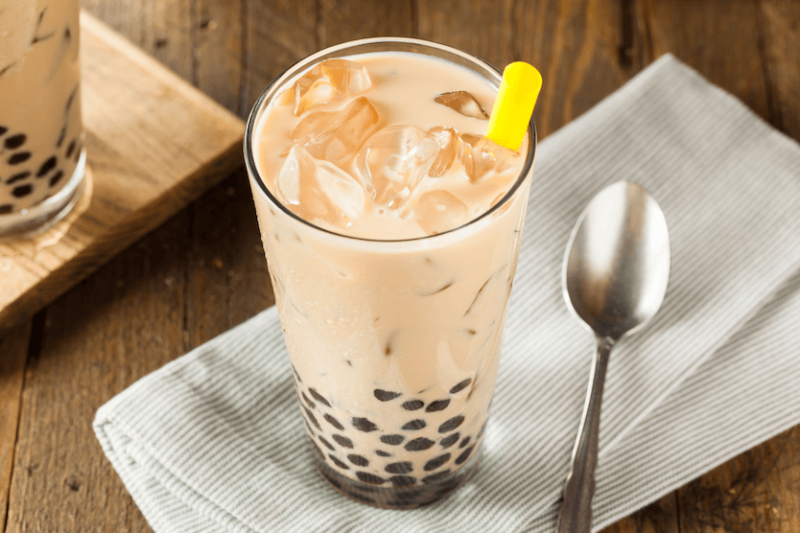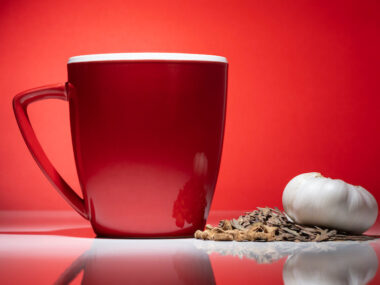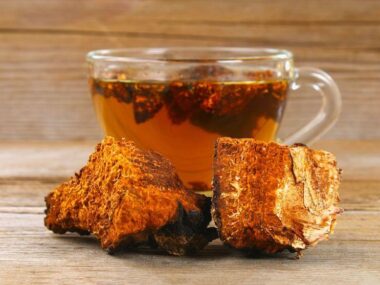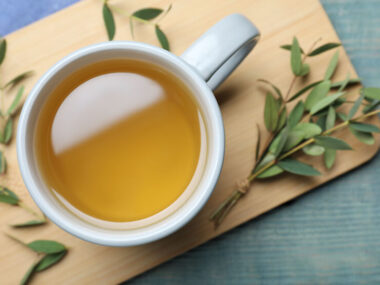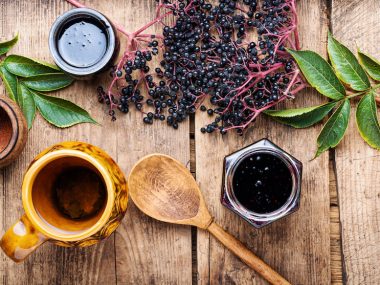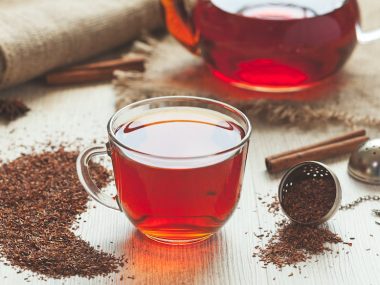For those of us unfamiliar with the tubular root called taro, this post will be interesting. You will be surprised to find out that taro milk tea is made from something commonly grown just outside the doors of many homes. Let’s “dig up” the mystery behind this tea variety!
Table of Contents
What is Taro Milk Tea?
Taro milk tea is a diluted version of tea that contains more milk and added ingredients than the tea itself. If we broke this beverage down, it would easily pass as ¾ milk, with the remaining fourth being black tea, sugar, and tapioca pearls.
Taro is the foundation for the tea and comes from a starchy root. To further break down what taro is exactly, we need to look at the plant species that produce it. Colocasia esculenta (taro) goes by many common names that include caladium, dasheen, malango, and (are you ready for it?) elephant ears!
Taro comes from the “corm” of the elephant ears plant. Corms are bulbous growths (known as a storage organ) that form in the ground and is connected to the plant. It acts as a storehouse during the winter while the plant is dormant.
What Is Taro Milk Tea Made Of?
Taro milk tea is a beverage made from taro root (Colocasia escunlenta) milk, tapioca pearls, black tea, sugar, and condensed milk. It is typically enjoyed as a Boba tea (bubble tea) which is prepared in variations. Many Boba tea shops serve a purple-colored variation of taro milk tea that has other additives and toppings.
Is Taro Milk Tea Purple?
Taro powder and fresh taro root are not purple at all, as most of us assume. Taro is an off-white color. There’s a lot of confusion over the actual color of taro milk tea because Boba tea shops add purple yam to taro milk tea for its sweetness and pop of color. Ube (Dioscorea alata) is a purple yam that grows all over the world. It is a popular item among Asian cultures.
Straight-up taro milk tea won’t ever be purple, so it helps to keep this in mind when visiting a tea shop and ordering it “traditional-style.”
History and Background of Taro Milk Tea
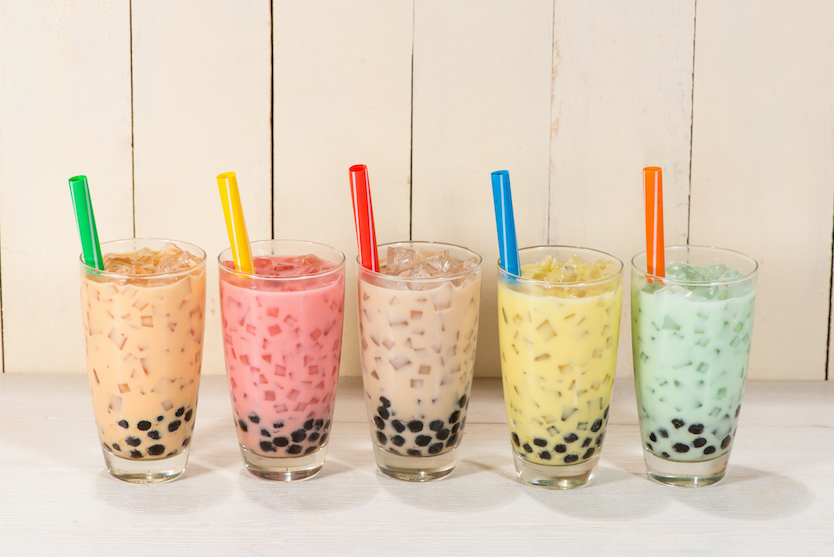
Taro root’s origins lay within the dense, lush rainforests of India and Southeast Asia. Evidence of taro root being cultivated in Papua New Guinea reveals this plant has been around for a very long time.
Scientists uncovered farming earthworks used to control water in the Kuk Swamp of Papua New Guinea that dates back 10,000 years. Stone implements were discovered in the Solomon Islands of Papua New Guinea, which dates 28,000 years back. These two discoveries, coupled with the abundant presence of taro plants in both areas, lead researchers to believe that this plant was domestically grown as a source of food.
Taro has been used for thousands of years in traditional medicine to treat numerous ailments and continues to be used today in Ayurveda and Eastern medicine.
Taro plants continue to grow in the Papua New Guinea area today and the Pacific Islands, Africa, Asia, China, Philippines, Thailand, Samoa, Tonga, and Fiji.
What Does Taro Milk Tea Taste Like?
Taro milk tea has a sweet, nutty flavor with a vanilla finish. Cooked taro root will have a similar flavor to sweet potatoes. Those who drink the tea prepared with taro milk powder claim that it has a rather sweet metallic taste.
What is Taro Tea Good For?
Taro milk tea has a few benefits because of the taro root, dairy component, and black tea. The other added ingredients, such as tapioca pearls and sugar, offer no benefit. The taro root provides nutrients that include Vitamin C, thiamin, riboflavin, niacin, potassium, phosphorus, and zinc.
Added Dietary Fiber
Taro contains fiber that plays an active role in regulating our digestive system. One cup of taro provides 6.7g of fiber. Fiber is vital in our diet to help us avoid constipation, hemorrhoids, reflux, ulcers of the stomach, and diverticulitis.
Eye Health
Taro root contains a high amount of β-carotene (carotenoids), which reduce the progression of eye diseases such as cataracts and age-related macular degeneration. Carotenoids (which have antioxidant properties) contain elements such as beta-carotene, lycopene, lutein, and zeaxanthin. Beta-carotene is converted into Vitamin A, while lutein and zeaxanthin protect our eyes from harmful blue light.
Can Taro Milk Tea Be Enjoyed Daily?
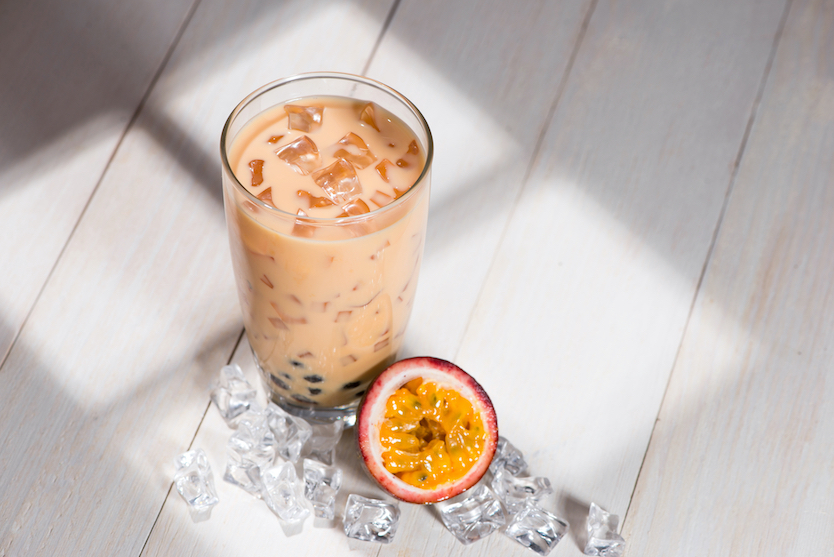
Taro milk tea may cause adverse reactions. Researchers found that the pungent taste of taro is in part due to oxalates in the plant. When preparing fresh taro root, if it is not thoroughly cooked and is still in its raw state, the ingestion of oxalates can be toxic.
Oxalates are needle-like crystals that are present in taro. These oxalates puncture, irritate tissues, and even poison if consumed in high quantities of raw taro. To reduce oxalates in taro, it must be boiled for a full 30 minutes. However, this merely reduces oxalates to 56.7% at best, leaving a residual amount behind. When boiling taro root for tea, there will inherently be some oxalates present.
We would not recommend drinking this tea daily not only because of the oxalates but because of the amount of sugar, fat, and carbs.
Taro Milk Calories
Taro milk tea is carb-dense and sugar ladened and is not considered the healthiest drink. Although it tastes wonderful, it’s not something you should enjoy too often. The taro root is two times higher in carbs compared to potatoes because of the extremely high starch content (up to 87%.) This is why taro milk tea calories are high.
According to the researchers, any type of boba tea (teas prepared with tapioca pearls) are high in calories, fat, and carbs. A 6 oz. cup of milk tea with tapioca pearls can contain up to 19g of carbs and 115 calories. Those figures don’t take into account any sugar or condensed milk added.
Does Taro Milk Tea Have Caffeine?
Taro milk tea, if prepared traditionally with added black tea, will have caffeine. You always have the option to add any type of tea to your taro milk tea, such as green oolong or rooibos. However, when it comes to caffeine, black tea will always have the highest level.
Although taro milk tea contains black tea, the majority of the drink is milk which significantly reduces any caffeine. A 6 oz. cup of taro milk tea contains about 25mg of caffeine at best. The daily recommended caffeine intake is 400mg.
How to Make Taro Milk Tea
Taro milk tea can be enjoyed in many ways. However, we have two traditional recipes to make this tea. We’ll show you how to make taro milk tea with taro powder.
Traditional Taro Milk Tea Recipe
Ingredients
- ⅔ cup of freshly peeled and diced taro root
- 4 teaspoons of sugar (2 teaspoons to be used two times for separate functions)
- Small pinch of salt
- 3 tablespoons of black tapioca pearls
- ½ cup of strongly brewed black tea
- 1 teaspoon of condensed milk
- 6 oz. of milk
Directions
- Boil the diced taro root for 30 minutes.
- Thoroughly drain the water.
- Mash the soft taro root until it forms a paste.
- Add 2 teaspoons of sugar while the paste is still hot. Set aside.
Tip: Using a blender, hand blender, or food processor to “mash” the taro root makes it much smoother.
- Brew your tea and set it aside.
- Cook your tapioca pearls and 2 teaspoons of sugar by boiling in water until the pearls float (about 5-7 minutes.)
- Remove from heat.
- Thoroughly drain and rinse in cold water.
- Mix the brewed tea, taro root paste, and condensed milk. Stir well.
Tip: For added effect, paint the bottom of your glass with a little bit of the tea/root paste/condensed milk mixture.
- Add the tapioca pearls and milk to the glass.
- Enjoy hot or over ice.
Purple Taro Boba Milk Tea
Ingredients
- 3 tablespoons of black tapioca pearls
- 2 teaspoons of sugar
- 2 tablespoons of instant taro powder
- ½ cup of black tea strongly brewed
- 6 oz. of milk
- 1 tablespoon of purple yam powder
Directions
- Prepare your brewed tea.
- Bring a pot of hot water to a boil and add tapioca pearls with 2 teaspoons of sugar.
- Let this boil for 5-7 minutes or until the boba begins to float.
Tip: Adjust the timing of how long these are boiled depending on how soft or chewy you want them.
- Remove from heat.
- Thoroughly drain the water from the tapioca pearls.
- Run the tapioca pearls under cold water and drain. Set aside.
- Add instant taro powder, purple yam powder, and milk to brewed tea and stir.
- Add tapioca pearls
- Enjoy hot or over ice.
The “Taro-ible” Truth About Taro Tea
Although there are some benefits of taro root, the fact that this tea will pack on the pounds makes it questionable. It makes a nice sweet indulgence to be enjoyed here and there, but compared to a cup of black or green tea, it pales in comparison.
